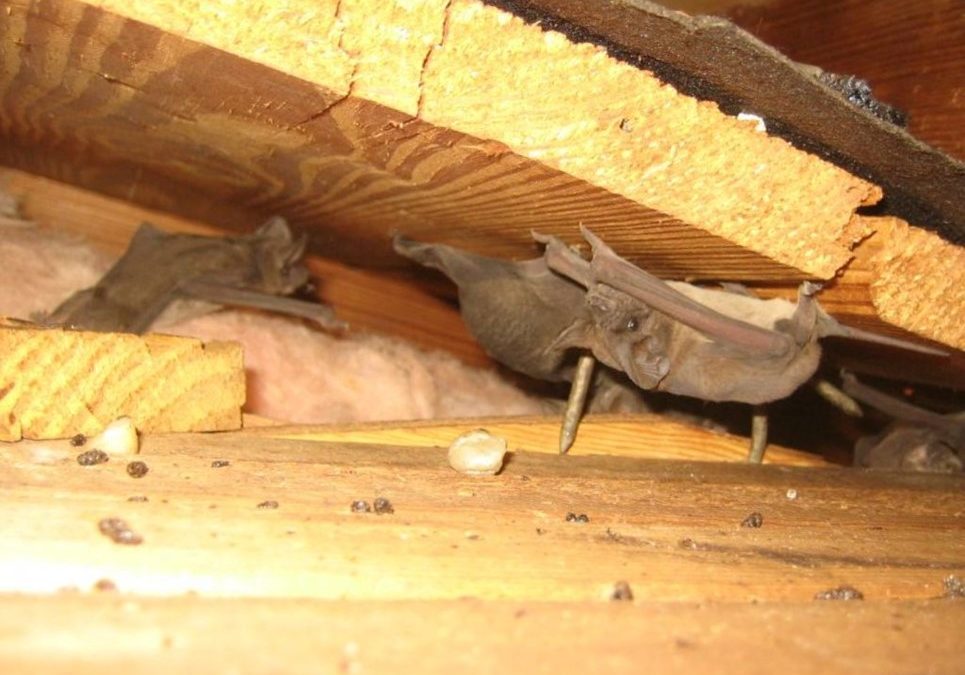Hearing strange noises up in the attic is enough to give any homeowner a fright, and yet, it’s quite a common occurrence in most households in the United States. The tricky part is identifying the source of the noises, since a bunch of animals squatting in your attic might be the culprit. Knowing what animal is bothering you is the first step toward successful removal. Once you’ve identified the animal in question, we suggest that you visit norcalwildliferemoval.com, and schedule an appointment with a wildlife removal professional today.
So what animal is in my attic?
It’s common for homeowners to discover anything from raccoons to rats, to squirrels, and even bats nesting up in their attic. This is because the attic is a generally secluded area of the home that offers most of the same benefits (shelter, warmth, etc.), but doesn’t see as much traffic. This makes it an ideal hiding spot for intrusive wildlife.
Not only that but attics are also favored by wild, furry intruders because of the usual clutter. This presents the animal with an abundance of choices when it comes to designing its own nest. So, suffice to say, attics are pretty popular among wildlife intruders.
Bats
Bats are common home intruders who appreciate the quiet and darkness inside your attic. For these winged mammals, your home attic provides an ideal nesting space, especially for mother bat colonies, looking for a spot to raise their young.
Bats are, by nature, nocturnal creatures, so a good way to identify them is by when you hear the noise. If it’s during the day, it’s unlikely to be bats. You should also pay attention to the type of noise you’re hearing. If it’s a high-pitched, chirping, or squeaky noise, then it’s a good sign it’s bats since this is how they communicate with one another.
While bats aren’t aggressive towards humans, their droppings (guano) are laden with dangerous bacteria and are extremely corrosive.

Raccoons
Another common nocturnal attic guest is the infamous bandit, the raccoon. In its eternal search for food, the raccoon will seek out shelter that’s nearby a food source (can be your trash can, vegetable patch, or pet food). So that’s how you might end up with a raccoon in the attic.
Raccoons are distinguishable also by sound, which because of the raccoon’s size and weight, will have a thumping vibe to it. You’ll be aware of a heavier animal moving around in there. You may also hear crying or excessive vocalizing. With raccoons, we’re still usually looking at mothers trying to find a place to raise their young, which is why we advise caution in raccoon removal. You don’t want to separate the mother raccoon from her babies.
Squirrels
Squirrels are one of the very few diurnal animals you’ll find in your attic, which makes them somewhat easier to distinguish. If you hear scurrying or scratching up in the attic during mid-day, for instance, it’s highly unlikely that the culprit is a raccoon. You may also hear distinct rolling noises – since squirrels are essentially hoarders, they’ll collect nuts, acorns, and other similar edibles, then roll them towards their stash.
Once again, while we may think of squirrels as cute, it’s worth noting that they can be quite damaging to your property, so you’ll want to look into ways to remove them as quickly as possible. Because of their small size, and impressive climbing abilities, squirrels are quite sneaky intruders.
Rats and mice
Last but not least, it’s possible (and quite common) for the noise in your attic to be caused by rodents. Rats and mice will take shelter wherever they find a fairly open space that allows them easy access to food. Like most other wild animals, their presence can damage the items in your attic. The chances of you requiring additional attic repair services like attic insulation removal increase the longer you ignore the noises in your attic.
So do yourself a favor, and seek out professional help about the noises in your attic today. While it’s helpful for you to identify the animal causing the noise, we wouldn’t recommend trying to remove them yourself – better hire a pro instead!

Recent Comments